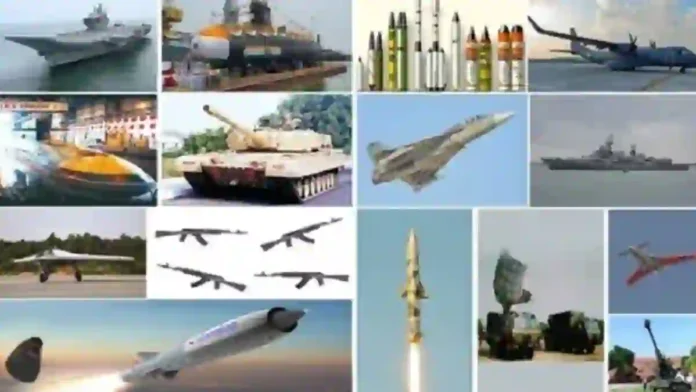In a landmark move to modernise its military and boost self-reliance, the Ministry of Defence has approved the initial phase of procurement for ten major projects, collectively valued at over ₹1.05 lakh crore. These projects, granted Acceptance of Necessity (AoN) by the Defence Acquisition Council (DAC), span a wide spectrum of advanced equipment—ranging from warships and missile systems to surveillance aircraft and integrated support systems—aimed at strengthening India’s defence posture across land, air, and sea.
Major Warship Project: Mine Countermeasure Vessels
The largest allocation within this package is for the indigenous construction of 12 Mine Countermeasure Vessels (MCMVs), with an estimated outlay of ₹44,000 crore. These vessels, each weighing between 900 and 1,000 tonnes, are designed to detect and neutralise underwater mines that threaten shipping lanes and ports.
The Indian Navy, which currently lacks dedicated minesweeping ships, relies on limited clip-on systems for mine countermeasures. The new MCMVs will fill this critical gap, especially as maritime activity intensifies in the Indian Ocean Region amid growing joint naval operations by China and Pakistan.
The MCMVs will feature advanced sonar, remote-controlled vehicles, and mine neutralisation systems, and are expected to take around a decade to build. Their deployment will significantly enhance the Navy’s ability to safeguard India’s 7,500-kilometre coastline and major ports.
Quick Reaction Surface-To-Air Missiles (QRSAM) For Army And Air Force
A substantial ₹36,000 crore has been earmarked for the procurement of Quick Reaction Surface-to-Air Missile (QRSAM) systems, developed by the Defence Research and Development Organisation (DRDO). These systems will be deployed in three regiments for the Army and three squadrons for the Air Force, providing a rapid-response shield against enemy aircraft, drones, and helicopters within a 30-kilometre range. The QRSAMs are expected to play a pivotal role in India’s air defence network, as demonstrated during Operation Sindoor, and will address the Army’s requirement for 11 such regiments in total.
Read- Operation Sindoor: Lessons, Strategy, And The Triple Threat: Deputy Chief of Army Staff
ISTAR Surveillance Aircraft For Precision Targeting
The DAC has also approved the acquisition of three ISTAR (Intelligence, Surveillance, Target Acquisition, and Reconnaissance) aircraft, with a budget of ₹10,000 crore. These platforms will be equipped with DRDO-developed sensors, including synthetic aperture radars and advanced optical imaging systems, enabling the Indian Air Force to conduct real-time surveillance and precision targeting of enemy positions and assets on the ground. The ISTAR aircraft will significantly enhance situational awareness and operational effectiveness in future conflicts.
New Underwater And Naval Systems
Further approvals include the procurement of semi-submersible autonomous vessels for intelligence, surveillance, and reconnaissance (ISR) missions. Developed under the Make-II category, these platforms will be built by Indian industry without upfront government funding, fostering innovation and private sector participation.
Additional naval upgrades feature the acquisition of super rapid gun mounts (SRGMs)—the 76mm main guns for surface ships—and DRDO-designed moored naval mines, which can be triggered by sound, magnetic, or pressure signals to counter enemy vessels.
Integrated Support And Inventory Management
The procurement plan also covers armoured recovery vehicles and advanced electronic warfare systems to enhance operational support and battlefield endurance. A tri-Service integrated inventory management system has been approved to streamline logistics and coordination among the Army, Navy, and Air Force, improving supply chain efficiency and readiness.
Read- India Completes Development of K-5 Nuclear Ballistic Missile To Expand Submarine Strike Range
Procurement Process And Timelines
While these projects have received AoN, they must still undergo technical assessments, financial approvals, and vendor selection as per the Defence Acquisition Procedure (DAP). No specific timelines have been announced for contract finalisation or delivery, but the approvals mark a decisive step towards comprehensive military modernisation and indigenous capability development.
India’s latest defence procurement approvals represent a sweeping upgrade of its military hardware, with a strong emphasis on indigenous design and manufacturing. The focus on warships, advanced missile systems, surveillance aircraft, and integrated support platforms is set to transform the operational capabilities of the Indian armed forces in the coming decade.
Based On TOI Report
Agencies




